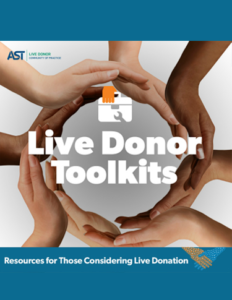 After Five Attempts to Pass, Let’s Make This Year Our Last!
After Five Attempts to Pass, Let’s Make This Year Our Last!Living Donor Protection Act 2024 – H.R. 2923/S. 1384 (2023-2024),
 After Five Attempts to Pass, Let’s Make This Year Our Last!
After Five Attempts to Pass, Let’s Make This Year Our Last! After Five Attempts to Pass, Let’s Make This Year Our Last!
After Five Attempts to Pass, Let’s Make This Year Our Last!
Most parents (or those in need of a kidney transplant) are often reluctant if not strongly opposed to accepting a child’s (or loved one’s) kidney donation. Ironically, adult children and family members already make independent decisions on their own, yet reluctant parents don’t seem to see it that way.
Parents are wired to protect their children. That said, they often feel accepting a kidney from a child is incongruent to their parental oaths and responsibility to keep their loved ones out of harm’s way.
Oddly enough, most parents don’t put themselves in their children’s (or loved one’s) shoes and therefore don’t view their objections as hurtful or harmful.
Parents need to be guided so they can see their opposition to accepting the gift of life from a child is actually hurtful. The hurtful part comes into play when the parent robs the child of joy and psychological gain, which they’d receive from helping a beloved parent live a better and longer life.
To balance perceptions, create a reverse scenario for the parent to ponder. Ask the parent if they’d ever consider donating a kidney to their mother or father if they were in need. Chances are, you’ll hear a resounding “Of course, I would!”
When this is the case, present 2 follow-up questions:
Putting the shoe on the other foot often allows parents to reframe their need to dishonor their child’s wishes. And, while protecting a child’s medical safety by prohibiting donation, it actually hurts their emotional and physiological health for years to come.
Let’s face it. The child wasn’t asking for approval. They were simply stepping up to serve. Their desire to help is merely a reflection of the loving values their parents taught them –family first, always.
We often forget that the gift in giving is not in the receiving, but rather the joy one receives from the giving. No one should have the power to take that away from the giver.
Donors have said, “If my recipient refused my offer, I’d be robbed of a blessing.” It’s not the receiver’s call to accept or decline. That’s the transplant centers’ job.
So, the next time you hear a parent in need of a kidney transplant refuse to accept one of their children as a potential donor—or anyone refuse to accept a kidney from a loved one—read this article to them, or better yet, print it off and hand it over with endearing smile.
Author: Risa Simon, 2010 (live-donor) preemptive kidney transplant recipient, motivational speaker, inspirational author, patient mentor/advocate and founder/CEO of Simon Says Seminars, inc., TransplantFirst Academy, TransplantStrong, and the Donor-Seeker® Program. For more information contact: risa@transplantstrong.com or visit: www.TransplantStrong.com
1. Who can be a living kidney donor?
Most people in good health can be considered for testing to see if they’d qualify to become a living kidney donor. The qualification process typically begins with a telephone screening that determines if a thorough evaluation should follow. The evaluation typically includes several interviews, exams, scans and lab tests. The transplant center requires these tests to ensure the person who wishes to donate is healthy enough to do so.
2. What’s the kidney donation surgery like? What Are the risks?
The surgery is performed with small incision, which is known as laparoscopic surgery. In kidney donation (also known as a nephrectomy), the procedure typically involves four 1-inch slits in the area of the stomach and bladder. There is also one four-inch incision made around the navel. This incision is a bit larger, so the kidney can be removed from this area.
The surgical process for removing a kidney from a healthy individual has become a fairly standard procedure. Nonetheless, the procedure still carries the same level of risk as any other major surgery. The most common risks associated with kidney donation (also known as a nephrectomy) can include blood clotting, infection and a reaction to the anesthesia. The risk of death from donating a kidney is less than one percent, or 0.0003 % (which is about 3 in every 10,000 surgeries).
Hospital recovery for donating a kidney usually involves 1-3 overnight stays. Hospital discharge is determined by the donor’s health and their ability to get out of bed and walk on their own.
Because the kidney donor will feel pain after surgery, pain medications will be provided to help patient comfort. It is not uncommon for some patients to experience constipation from pain medication. Because of this, laxatives may be provided.
Most living kidney donors can resume their regular activities within 3 weeks after donation, providing they are less strenuous activities. Depending on the type of work the kidney donor performs and the level of difficulty, kidney donors can often go back to work within 3-5 weeks. If the donor’s job is a desk job, they can often get back to work even sooner. Those engaged in more strenuous activities are advised to refrain from difficult physical tasks until they are completely recovered.
3. Who pays for the cost for the kidney donor’s surgery?
The medical insurance covering the individual who receives the donor’s kidney will cover the donor’s medical costs. Things that are not covered or paid for (by the transplant patient’s insurance company) can include the donor’s time off from work, recovery care and travel costs. There are a few states that now require employers to cover living kidney donor’s time off work for a set period of time. *It is wise to check with employer policies, state laws and federal updates.
4. Can a living kidney donor live a normal life after donating?
There are many studies showing living kidney donors doing quite well after they donate a kidney. For the most part, their health and quality of life remains unchanged. The most notable change expressed by most living kidney donors comes in the form of the perpetual joy they feel for their extraordinary act of human kindness.
Living kidney donors aren’t typically required to take new medications following the surgery, other than a pain medication or a stool softener for a short period of time. Likewise, kidney donors do not need to follow a special diet after they are discharged from the hospital. They are, however, asked to avoid alcohol while taking pain medication. The guideline for alcohol consumption after kidney donation is fairly standard. Living kidney donors should be responsible and consume alcohol in moderation.
5. What emotions might the kidney donor feel?
Like any new experience, donors can often feel both excitement and anxiety from time to time. Typically, the more the donor understands going into the process, the less anxiety they’ll experience. Post-surgery, donors often report a feeling of honor and joy. As a result, their uplifting attitudes have been found to reduce post-surgical pain, while also boosting perceptions of recovery inconveniences.
6. How successful are living kidney donor transplants?
Hospitals with established transplant programs show very good transplant success rates. Most transplant centers* exceed a 95% success rate one year after transplantation.
The best success rates are seen in transplants from living kidney donors. (*Transplant programs are required to keep track of their success rates. Be sure to ask the center to share their success rates).
7. How old do you have to be to donate a kidney?
Generally, the ideal age range to donate a kidney is 18-65 years old. Of course, the kidney donor will need to be healthy enough to donate a kidney safely. While there have been donors who have donated a kidney after the age of 65; younger donors are preferred. Family members are also preferred, as they offer a better match.
8. What happens if I’m not a blood-type match?
Often times, potential donors can be incompatible in blood type or have antibodies that would fight against their intended recipient. When the living kidney donor is not an ideal match for their intended recipient they can still donate—just not directly. This is accomplished through a Paired Exchange Program.
In Paired Exchange, a computer algorithm is used to find a better match for incompatible groupings. In this model, the living kidney donor’s kidney is swapped with another person’s incompatible living kidney donor.
There is also something known as Compatible Pairs, where a donor and patient that are biologically compatible (but want to find a better match through a paired exchange swap) agree to be matched with more suitable donors to increase the chance that the transplanted kidney will function better and last longer.
Advanced Donation, also known as ADP, offers a unique kidney paired exchange opportunity, separated in time.
There are four types of ADP cases. 1) Short term cases, where the intended recipient is on dialysis or is in imminent need of a kidney transplant. 2) Short Term Swap Saver, where the paired donor proceeds with donation to keep the rest of a swap on schedule, but the recipient remains in imminent need of a kidney transplant. 3) Voucher cases, where the intended recipient is currently not in need of a kidney transplant, yet they may need a transplant in the future; and the 4) Voucher Swap Saver, where the donor proceeds with donation to keep the rest of a swap on schedule. This occurs after their intended recipient is transplanted by kidney from another living donor or a deceased donor.
9. What if a kidney donor changes their mind?
Potential donors are able to change their mind about moving forward before or after they’ve been approved. When this is the case, the reasons for donor disqualification are kept confidential. The donor’s intended recipient will only be told that the donor was not an ideal candidate, (just as they would if the donor was not medically suitable for donation). To ensure donor privacy, the transplant center does not share the reason as to why a donor was disqualified.
10. How will donating a kidney impact future pregnancies or my sex life?
Donating a kidney has not been shown to reduce the fertility of men or women. Because the body requires time to recover from the surgery of donating a kidney, it is recommended that women wait 3-6 months after donation to get pregnant. However, a donor can engage in sexual activities after their incisions have completely healed and they feel comfortable enough to do so.
11. Are kidney donors rewarded for their gift-of-life?
Legally, there can be no payment given for a kidney donation. There is, however, a high value of perpetual joy that comes with saving someone’s life. Most donor’s say they never expected a financial reward. They have also said that the pride and joy they receive is priceless. Some donors have even called their kidney donation their own “Mount Everest.” Living kidney donation is a very personal experience. Because of this, not everyone can qualify to be a living kidney donor. While potential donors don’t have to be a the bravest and most heroic people on earth to consider living kidney donation, they’re dubbed as heroic, world-class humanitarians for life, post-donation.
12. What’s the first step to see if I’d qualify to be a living kidney donor?
If you know someone in need of a kidney transplant, the first step would be to call the kidney patient’s designated transplant center to schedule a telephone screening. If you don’t know someone in need, and want to donate altruistically, simply contact a transplant center near you.
During the call individuals can ask questions and get more details about the tests involved, the surgical procedure and recovery. Even if the person calling is not completely sure they want to proceed, this call can provide insight to help them decide if living kidney donation is right for them.
All donor coordinator conversations are handled in strict confidence to ensure callers can ask questions without pressure or concern. In other words, their intended recipient will never know someone called in (or their testing status), unless the potential donor communicates directly to their intended recipient.
If someone has been told they are not needed (at this time), but they’re still interested in donating, they can offer to be a “back-up.” This is important, should the intended donor unexpectedly change their mind or become disqualified. (Often times, it takes several potential donors to be tested before a qualified match is found).
Even after the surgery, when back-up donors are no longer needed, they can consider helping someone else. They can do this as an altruistic donor, or participate in a Paired Exchange to help several people by becoming the missing link in the chain.
Benefits of Receiving a Transplant from a Living Donor:
A kidney from a living donor “Ends the Wait” for those in need of a kidney transplant. The surgery can also be scheduled when the kidney patient needs it most—and before the recipient’s health declines to a point of permanently losing their transplant eligibility.
Living kidney donors are thoroughly tested to ensure the best match for their recipients. Donor testing also minimizes potential risks for both the living kidney donor and their transplant recipient.
Kidneys from living donors are known to function immediately after transplant. They can also last twice as long as kidneys from deceased donors. This could potentially equate into an additional 10-12 additional years of function.
Since the wait for a kidney from a deceased donor can take from 3 to 9 years or more, they must be on dialysis while waiting just to stay alive. Because of this, living kidney donors can help them end their wait for a transplant and need for continued dialysis. Ideally, when the timing is right, living kidney donors allow their intended recipients to schedule their transplant before they’d require dialysis (known as a preemptive transplant).
Are You a Kidney Patient Hoping to Find a Donor?
Need a living kidney donor for your transplant but don’t know where to start? Have you been told to ask your family and friends, but just thinking about that unimaginable “ask” causes you to shudder? If so, listen up!
Well, now you can—and this book shows you how! Whether you’re trying to avoid dialysis or end your wait for a transplant, In Pursuit of a Better Life: The Ultimate Guide for Finding Living Kidney Donors is the book you need.
•Conversation starters
•Key talking points
•Story-scripting strategies
•Message outreach tactics
•Enlisting networking teams for story-share
•Phrasing inspirational letters, signs & cards
•Positive mindsets for promoting human kindness
Fellow kidney patient, and author Risa Simon, understands your journey more than most. As a successful preemptive transplant recipient, she shares actionable tips and meaningful insights on how to become your own best advocate and attract your best life possible. The life Risa now lives.
In Pursuit of a Better Life has been called the quintessential marketing plan for engaging in “life conversations” with care, knowledge, and compassion. This book has been described as a lifesaving “game-changer” by those who uncover its proven path to preemptive (before dialysis) live-donor kidney transplants. So, what are you waiting for? If you want to ignite your Donor-Magnet® superpowers by putting these rarely discussed before insights into action—take your hand off the “pause” button and start reading this book! Get yourself a eBook copy today!
If you prefer a Paperback book, link here:
Are you (or someone you know) contemplating the possibility of becoming a living kidney donor? If so, the American Society for Transplantation (AST) just made your discovery process a lot easier. This just released, the first-ever, Live Donor Toolkit for individuals who want to learn more about living organ donation. From cost worksheets to medical implications, you’ll find it all and more in this comprehensive guide.

This one of a kind toolkit was created to help interested individuals navigate complex questions surrounding financial and medical considerations involved in living kidney donation.
While a reassuring 97.5% of live organ donors say they would donate again if they could, it’s important to learn as much as you can about living donation before considering this extraordinary gift of life.
There are potential medical, psychosocial, and financial impacts associated with donating an organ. That said, interested donors need access to that information, and the best way to provide it would be in a centralized educational format. This toolkit does that and more.
AST’s educational toolkit was created specifically to improve the availability and delivery of quality education for those considering live donation. It was also created to expand living donation messaging to reach those who might consider live donation if they knew more about it. Additionally, this toolkit offers educational content that can be used across the transplant community.
Described as being housed under two umbrellas, the Live Donor Financial Toolkit and the Live Donor Medical Impact Toolkit offer 10-15 stand-alone chapters each. As an added bonus, the Medical Impact Toolkit includes chapters written for both provider-level and patient-level comprehension.
Here’s a sample list of chapters in the Medical Impact Toolkit:
Here’s a sample list of chapters in the Financial Toolkit:
Click on the toolkit image below to learn more:

For more information on how to share your story, increase need awareness and potentially meet individuals who might be interested in learning more about living kidney donation and/or becoming a living kidney donor for someone in need, visit: www.findingkidneydonors.com